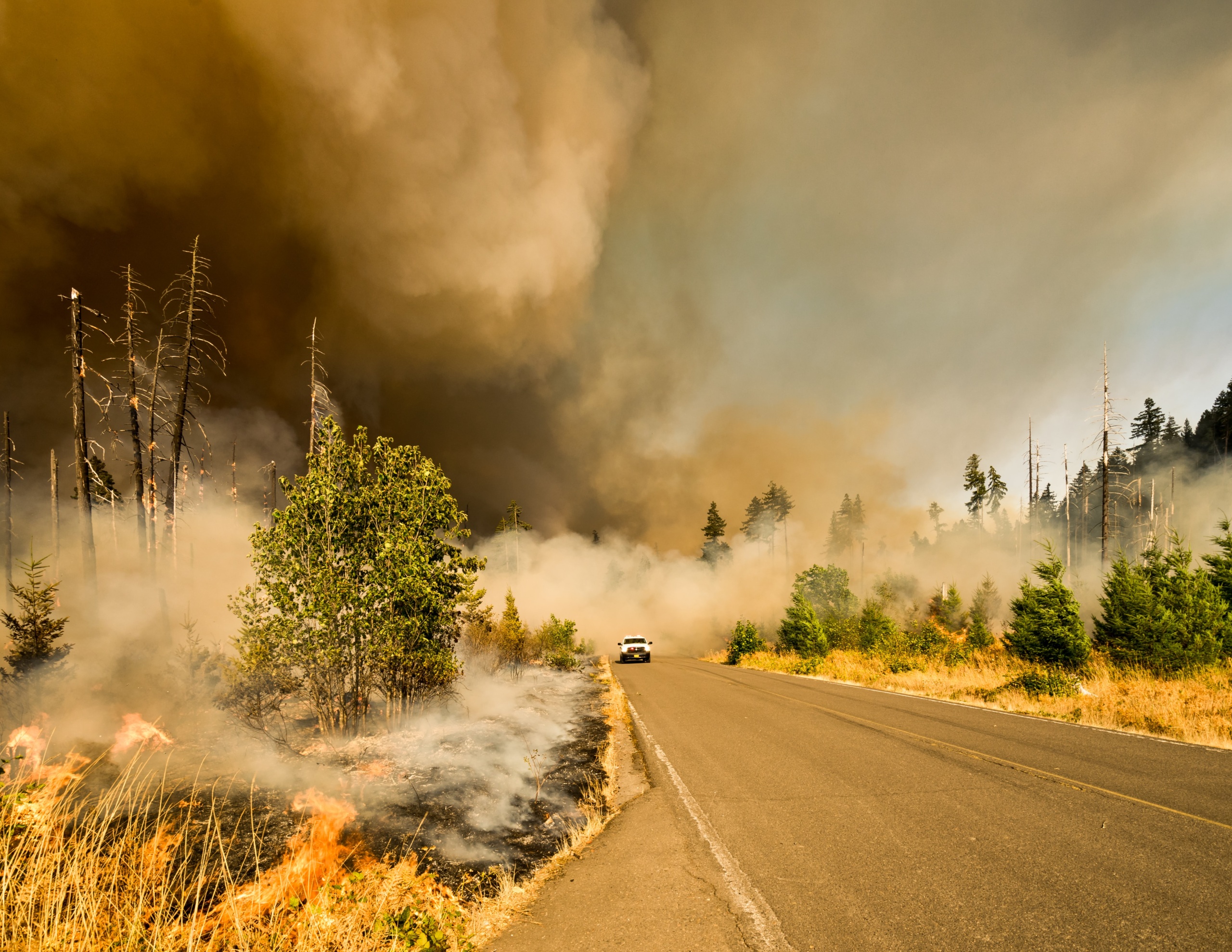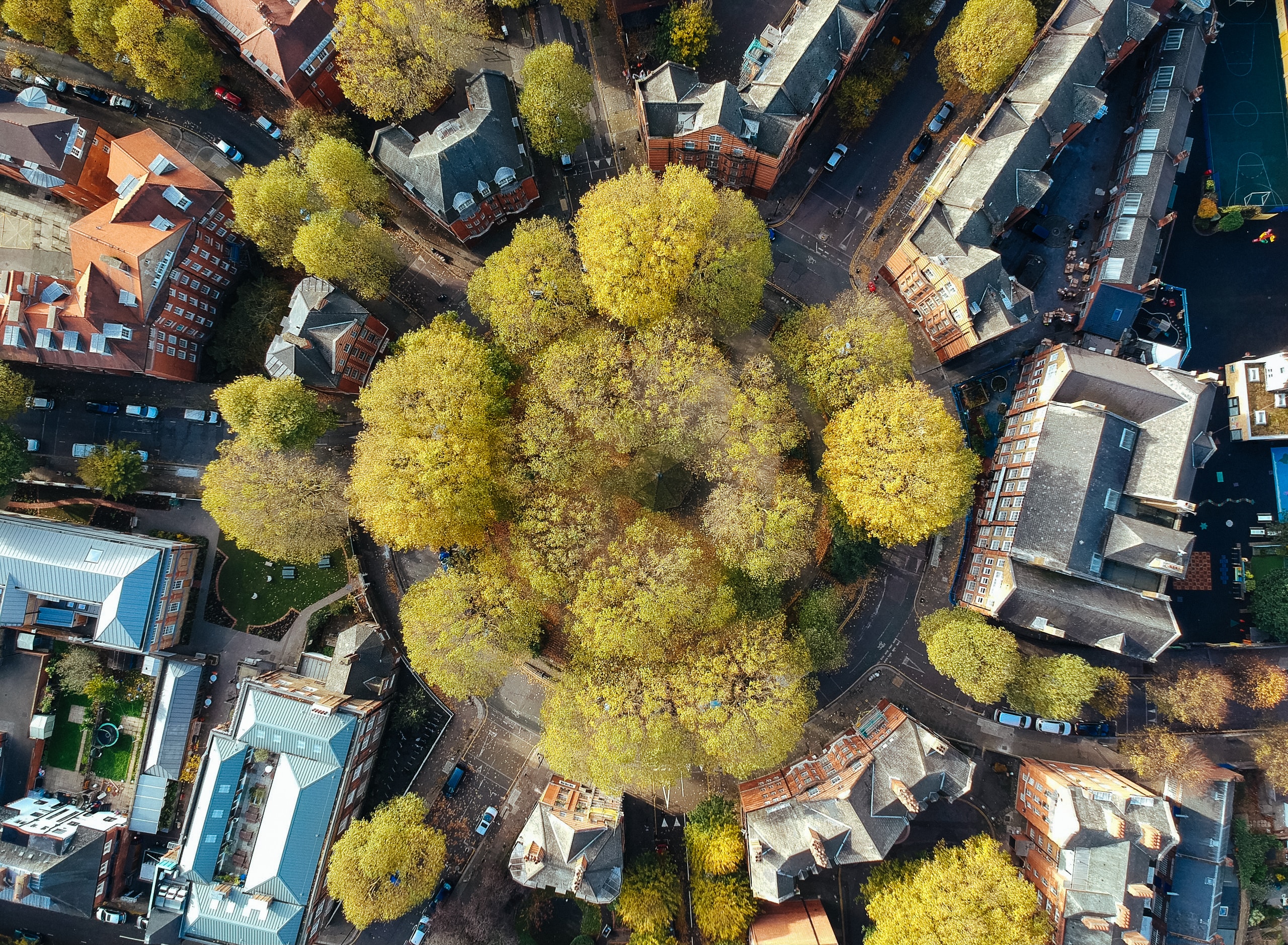
The Biden administration has released $1 billion in funding for urban trees. Here’s why that matters.
City trees aren't just ornaments. This unprecedented investment in the nation's urban forests will pay major dividends.
The Biden administration announced last week that it is making $1 billion in Inflation Reduction Act (IRA) funds available through the Forest Service’s Urban and Community Forestry Program to help plant and maintain trees in cities and towns across America.
These funds – part of the total $1.5 billion invested in the program under the IRA to support urban forestry initiatives – are being made available in the form of competitive grants to community-based organizations, tribes, municipal and state governments, nonprofits and other entities working to increase tree cover in urban areas.
A billion dollars might seem like a lot of money – but an investment in urban forests is an investment that will deliver major returns.
Urban trees cool our cities.
Cities are heating up. Roads, buildings, pavement and other hard surfaces absorb and retain heat, leading to the urban heat island effect, in which urban centers experience higher temperatures than surrounding areas. Tree-shade can reduce peak summer temperatures by as much as 45°F, according to the EPA, making cities more comfortable places to live and work.
But urban heat islands aren’t just uncomfortable – they also damage our health, with excessive heat causing thousands of premature deaths worldwide every year. By bringing the temperature down, tree shade can save lives – according to a 2023 study in The Lancet, more than a third of all deaths caused by excessive heat could be avoided by planting more trees in urban areas.
As well as saving lives, tree shade saves money. One study estimates that urban forests across the U.S. provide benefits in the form of reduced health impacts and lower energy consumption that are worth between $5.3 billion and $12.1 billion per year.
The World Economic Forum estimates that a single tree planted on the west side of your home, within five years of planting, can bring 3% savings in energy costs per household, and 12% within 15 years. Moreover, by reducing energy demand from cooling (responsible for around 70% of peak residential electric demand on extremely hot days in the U.S.), the shade provided by urban trees eases the strain placed on the electricity grid, in turn meaning fewer greenhouse gas emissions from energy generation.
Urban trees improve air quality and combat global warming.
Trees are natural air filters, absorbing carbon dioxide and other harmful pollutants and releasing oxygen into the atmosphere. This is especially important in urban areas, where air pollution levels can be significantly higher than in rural areas. A 2019 report by Frontier Group and Environment Colorado, for example, found that the city of Boulder’s 650,000 urban trees sequester 18,709 tons of carbon and absorb 139 tons of air pollutants per year, including carbon monoxide, nitrogen dioxide, ozone, sulfur dioxide and particulate matter.
Nationwide, by one estimate, trees remove more than 17 million metric tons of air pollutants annually, preventing 850 premature deaths, 430,000 asthma attacks and many other health problems. The more tree cover an area has, the more pollution is removed from the air.
Urban trees reduce noise pollution.
Although often overlooked in debates around the health effects of urban pollution, high levels of environmental noise do tremendous damage to our health, causing and exacerbating a range of serious conditions, from depression and anxiety to cardiovascular disease and strokes. Trees can act as natural sound barriers, absorbing and reflecting noise from roads, construction sites and other sources of noise. According to the USDA, a well-designed, strategically situated 100-foot-wide tree buffer could reduce noise by up to 15 A-weighted decibels (dB(A)).[1] For context, noise levels within 50 feet of a freeway are typically between 70 and 80 dB(A). In other words, that tree buffer could reduce traffic noise by at least 50%.
Urban trees nurture biodiversity.
Trees provide habitat and food for a wide range of wildlife, including birds, insects and small mammals. This includes critical habitat for at-risk birds, pollinator species and other vulnerable wildlife. Any single tree can be home to hundreds of species of plants, animals, fungi and mosses, and produce thousands of flowers that provide much needed nourishment for pollinators. Since tree cover helps to increase the diversity of wildlife in urban areas, it can play a key role in halting and reversing biodiversity loss.
The United Nations Economic Commission for Europe has argued that urban trees must be a key part of the overall action plan for protecting biodiversity, noting that, as well as providing food and habitat, urban forests can also serve as crucial hubs for genetic diversity, since they often contain a greater diversity of tree species than rural forests. This species diversity also makes urban forests more resilient to current and future threats, such as pest outbreaks and the effects of climate change.
Urban trees help manage stormwater runoff.
Urban trees are one of several forms of green infrastructure that can be used to help to manage stormwater runoff. Trees intercept rainfall in their canopy and delay it reaching the ground, reducing the amount of water that runs off impervious surfaces like roads and parking lots and into storm drains and waterways, while also allowing time for the water to infiltrate the soil. Tree roots absorb water and nutrients from the soil, filtering out pollutants and improving water quality. By one estimate, a single tree can intercept more than 4,000 gallons of water each year.
Recent research from Australia has shown that the presence of trees results in significantly reduced concentrations of soluble nitrogen and phosphorus in stormwater, both of which are major contributors to nutrient pollution that can create algae blooms and harm aquatic life. Another study found that trees on a typical suburban street retain almost a quarter of all stormwater runoff every year, and release the equivalent of 17% through transpiration (releasing water vapor through their leaves).
Urban trees provide aesthetic and recreational benefits.
Don’t underestimate the importance of aesthetics. Trees bring beauty to a city, creating green spaces and adding visual interest to urban landscapes.
Incorporated into parks or other green spaces, they also bring opportunities for city-dwellers to spend time in nature-rich environments, known to boost our mental and physical health, improve cognitive performance, attention, memory and creativity, reduce depression, lower stress and enhance our overall happiness and wellbeing. Urban trees can play a part in all that.
* * *
In short, trees are a crucial component of a healthy and sustainable urban environment. Nurturing and expanding our urban forests is vital for the wellbeing of our communities, and with more than a billion dollars in new funding opportunities available, now is the time to do it.
___________
[1] Simply put, decibel (dB) is a unit of sound measurement that measures the straightforward loudness of a sound. However, the human ear does not hear all frequencies equally. dB(A) is a measurement of loudness weighted to account for how the human ear actually perceives sound. For more detail, click here.
Topics
Authors
James Horrox
Policy Analyst, Frontier Group
James Horrox is a policy analyst at Frontier Group, based in Los Angeles. He holds a BA and PhD in politics and has taught at Manchester University, the University of Salford and the Open University in his native UK. He has worked as a freelance academic editor for more than a decade, and before joining Frontier Group in 2019 he spent two years as a prospect researcher in the Public Interest Network's LA office. His writing has been published in various media outlets, books, journals and reference works.
Steve Blackledge
Senior Director, Conservation America Campaign, Environment America
Steve directs Environment America’s efforts to protect our public lands and waters and the species that depend on them. He led our successful campaign to win full and permanent funding for our nation’s best conservation and recreation program, the Land and Water Conservation Fund. He previously oversaw U.S. PIRG’s public health campaigns. Steve lives in Sacramento, California, with his family, where he enjoys biking and exploring Northern California.
Find Out More

Five key takeaways from the 5th National Climate Assessment

Carbon dioxide removal: The right thing at the wrong time?

Fact file: Computing is using more energy than ever.




